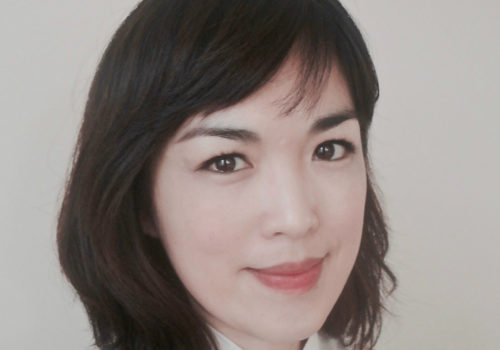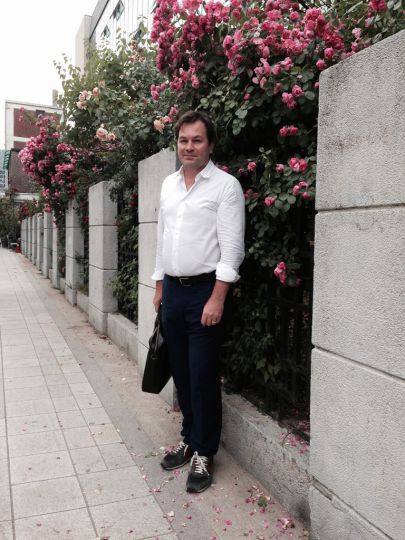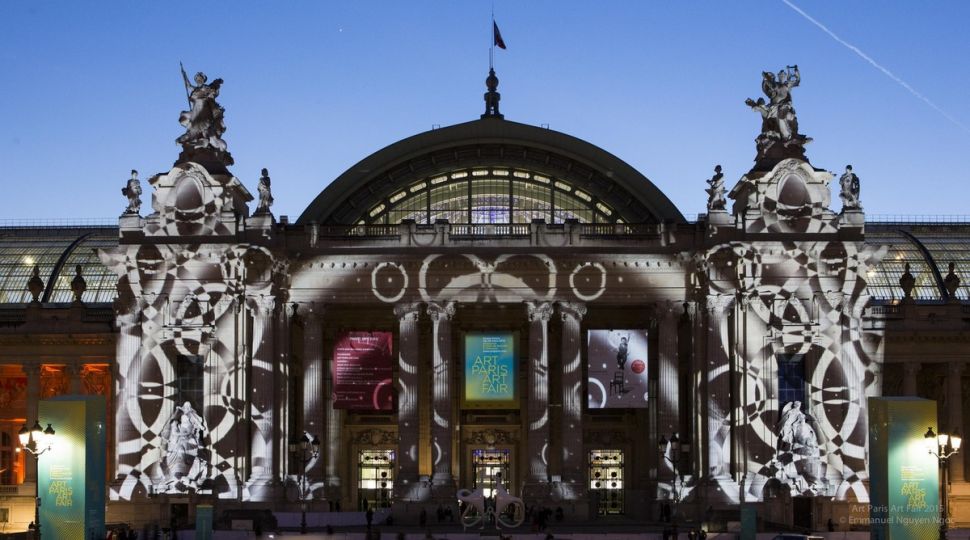For 2016 the Art Paris Art Fair welcomes 143 galleries from 22 countries. The focus this year is on the European art scene while the guest-nation-of-honor is South Korea, with a collection of the work of 80 artists selected by curator Sang-A Chun. A new addition this year is Bus Expo which offers itinerant exhibitions roaming the French capital until mid-April.
Marie de La Fesnaye met Sang-A Chun, curator for the Korean programming.
How did you respond to the Art Paris Art Fair’s invitation?
With great joy, of course! I would already be preparing different projects for this big event, the Franco-Korean Year, in order to participate in presenting the contemporary Korean art that I do through the program of contemporary art exhibitions at the Centre Culturel Coréen in Paris. Art Paris Art Fair’s invitation to curate the Korean project was, therefore, an excellent opportunity for me to make the French and international public discover the different facets of Korean contemporary art.
A platform was proposed around eight galleries from Seoul. How are they emblematic of excitement of the artistic Korean scene?
Gana Art Gallery and Park Ryu Sook Gallery of Seoul are a couple of the important galleries, historically speaking. Gaga Art has very diverse activities with important historic artists such as Youn Myeung-ro and Oh Sufan, but also emerging artists. Park Ryu Sook Gallery was one of the first to open its doors to the Gangnam neighborhood of Seoul. It helped establish the careers of certain internationally renowned Korean artists (Kim Tschang Yeul, Park Seo-Bo, Chun Kwang Young…). Gallery Simon says it represents artists who have already had international recognition (Moon Beom, Noh Sang-Kyoon) but also, in a constant renewal, it looks for young talents (Kim Ji Eun, Lee Changwon…)
313 Art Project is a gallery that is growing with a powerful program, in particularly a program that was established with an exchange with France in mind (presenting the work of Daniel Buren, Sophie Calle, Xavier Veilhan…)
Close to eighty Korean artists are presented at the fair. Do they share concerns and a common vision?
We have a wide range of artists from different generations who have various means of expression. There are recurrent themes (the quest for identity, the search for spirituality through gestures, specific materials… especially amongst the older photographers) but there are also very diverse themes amongst the younger generation. For example, questioning themselves about the role of art in current society or the status of the work and the artist, while sharing probably the same concerns of Western artists. The particularities of these Korean artists’ work reside, in part, in the somewhat paradoxical situation in which they live, which is that of a country officially at war. They work on this theme of borders, which is, at the same time, present (physically) and absent from their real life (relatively comfortable and peaceful). The view of these artists turned continually to the innumerable fractures that divide the Korean society, as well as to various horizons that open before them, and they deliver their vision favoring the usage of new media and mixed techniques.
Globalization, increasing urbanism, individualism, loss of cohesion and meaning, South Korea is transforming itself at high speed. How do the photographers understand this, and how do they translate it?
Korean photography has changed over various stages. The works of first-generation photographers represent the realism of everyday life in the style of documentaries and formal news stories. At the end of the 1970s and beginning of the 1980s, photographers started to assert themselves with their personal vision of photography itself. It was only in the 1990s that Korean photography became one of the full-fledged artistic disciplines in contemporary art. For example, the work of Gwan Osang (Galerie Paris-Beijing) called “Deodorant Type” which possesses an innovative attitude through erasure and the overflow of common sense, or even the transgression of borders between artistic domaines. His photographic sculptures constitute numerous images collected from the internet, representing the man of today, who appears like a virtual image without depth, contrary to the resulting voluminous work. While Chun Kyungwoo (Galerie Andre Thalmann) tries to take the “real” man in relation with others, time and space that surround him. And he calls into question photography as a medium, associated with the captured moment, and establishes the length of time it takes for a pose to free an element of truth within his model.
The young Korean photographers of today show an acute interest in individuals who live in an evolving society as well as their living environment which is constantly affected by urbanization and the social system in Korea.
At Art Paris, you’re also going to find some pioneers of contemporary Korean art whose work is oriented towards the search of the Korean aesthetic and soul. Bae Bien-U (Galerie RX) is inviting viewers to meditate and introspect through elements of Korean nature and Koo Bohnchang (Paik Hae Young Gallery) with the Korean Moon Jar (Dal-Hang-A-Ri), round but not perfect, free of all artifice, leaving traces of time, which the photographer tries to embody in his works.
FAIR
Art Paris Art Fair
From March 31st to April 3rd, 2016
Grand Palais
75008 Paris
France
http://artparis.com


















